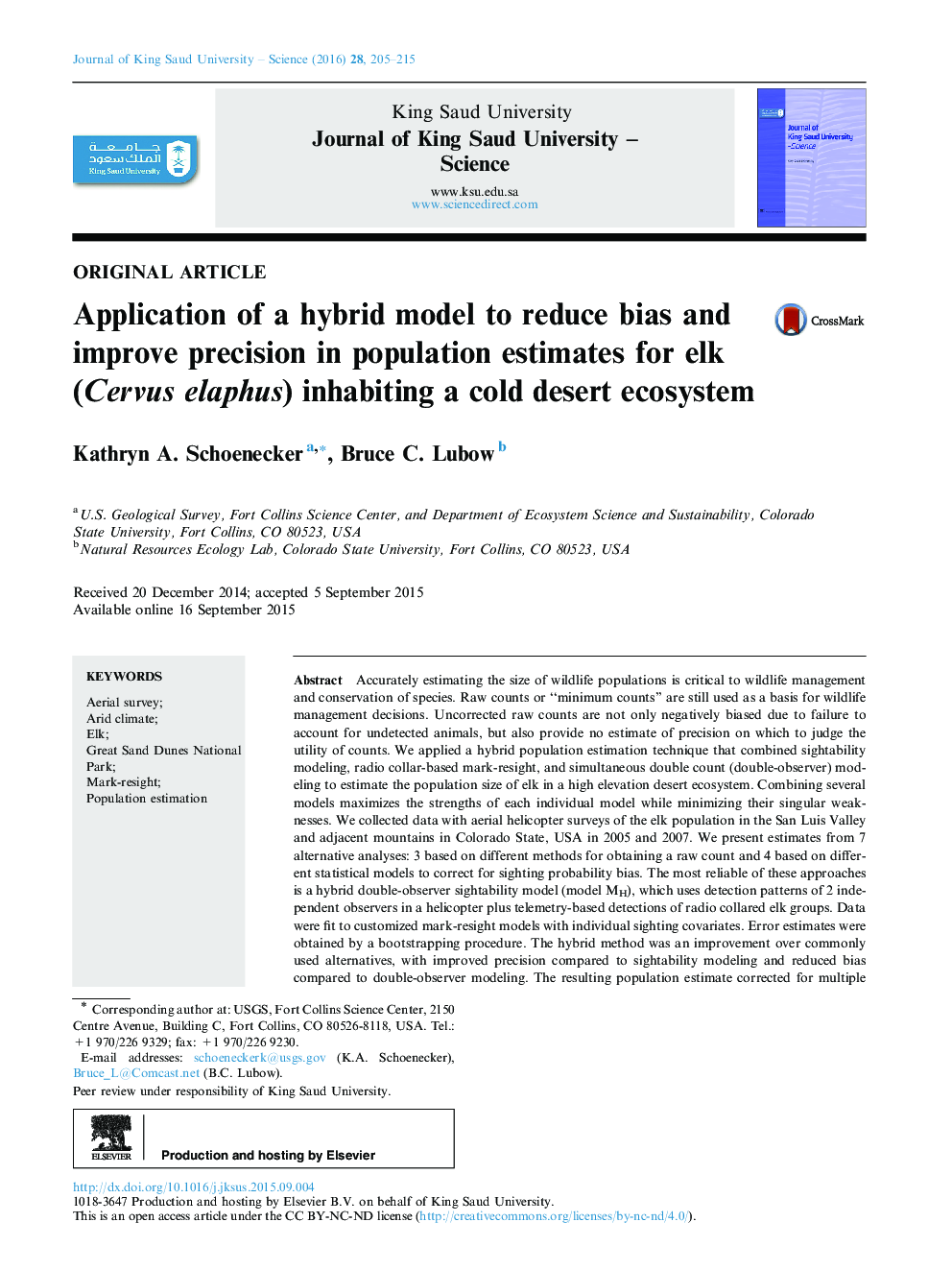| کد مقاله | کد نشریه | سال انتشار | مقاله انگلیسی | نسخه تمام متن |
|---|---|---|---|---|
| 827282 | 1369780 | 2016 | 11 صفحه PDF | دانلود رایگان |

Accurately estimating the size of wildlife populations is critical to wildlife management and conservation of species. Raw counts or “minimum counts” are still used as a basis for wildlife management decisions. Uncorrected raw counts are not only negatively biased due to failure to account for undetected animals, but also provide no estimate of precision on which to judge the utility of counts. We applied a hybrid population estimation technique that combined sightability modeling, radio collar-based mark-resight, and simultaneous double count (double-observer) modeling to estimate the population size of elk in a high elevation desert ecosystem. Combining several models maximizes the strengths of each individual model while minimizing their singular weaknesses. We collected data with aerial helicopter surveys of the elk population in the San Luis Valley and adjacent mountains in Colorado State, USA in 2005 and 2007. We present estimates from 7 alternative analyses: 3 based on different methods for obtaining a raw count and 4 based on different statistical models to correct for sighting probability bias. The most reliable of these approaches is a hybrid double-observer sightability model (model MH), which uses detection patterns of 2 independent observers in a helicopter plus telemetry-based detections of radio collared elk groups. Data were fit to customized mark-resight models with individual sighting covariates. Error estimates were obtained by a bootstrapping procedure. The hybrid method was an improvement over commonly used alternatives, with improved precision compared to sightability modeling and reduced bias compared to double-observer modeling. The resulting population estimate corrected for multiple sources of undercount bias that, if left uncorrected, would have underestimated the true population size by as much as 22.9%. Our comparison of these alternative methods demonstrates how various components of our method contribute to improving the final estimate and demonstrates why each is necessary.
Journal: Journal of King Saud University - Science - Volume 28, Issue 3, July 2016, Pages 205–215